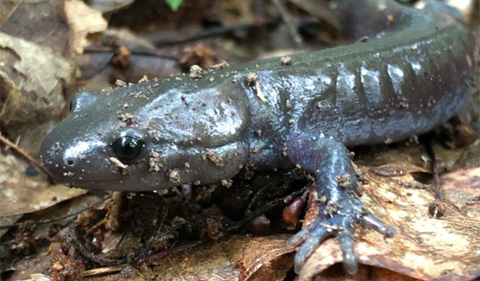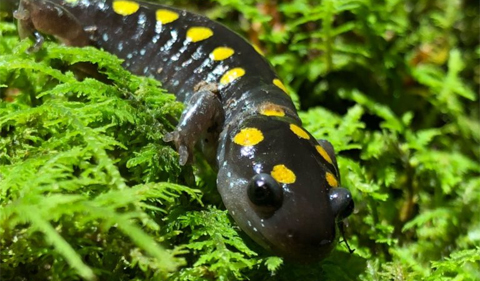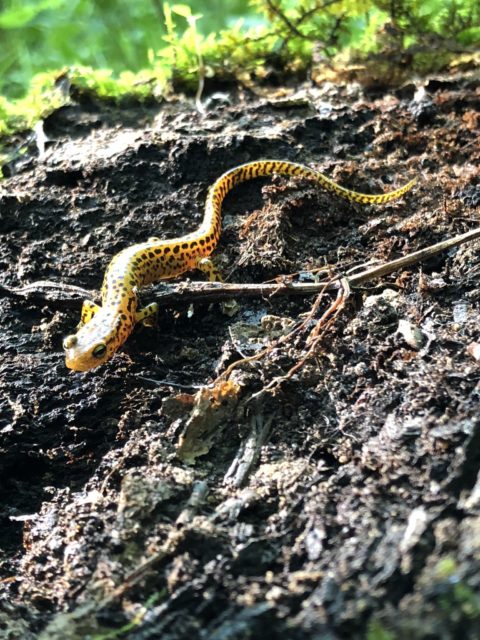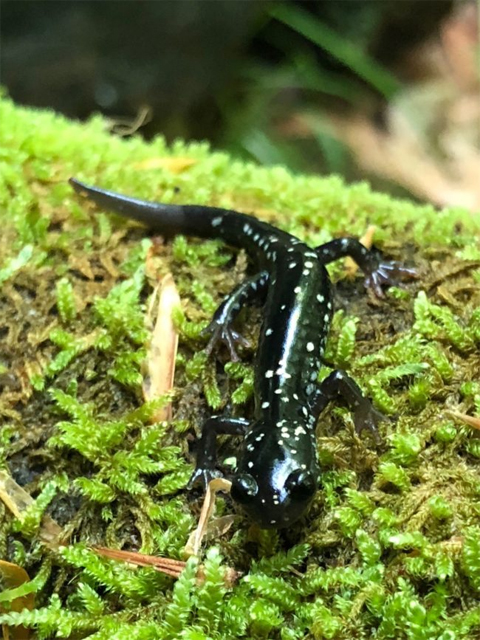Editor’s Note: Nicole Dake and Tyler Stewart are Environmental Biology and Wildlife Biology majors interning at the Wayne National Forest.
This summer two Biological Sciences students, Nicole Dake and Tyler Stewart, participated in an internship through the Wayne National Forest. Tasked with surveying a future prescribed burn site (the Long Ridge SE Oak Project, which will reestablish oak trees), one of the species they studied is salamanders.
Salamanders are a group of amphibians who have thin bodies, blunt noses, short legs, and tails as adults and larvae. They predominately live close to water sources or cool damp places, and they can even re-grow lost limbs and tails. Most of the time these amphibians are not found without some effort, as they dislike being out in the open where they are easy prey for hungry predators. Using this knowledge, they uncovered salamanders by flipping over rocks, logs, bark, and leaf litter in their search.
Some species of salamander they found included: Eastern Red-backed, Northern Dusky, Southern Two-lined, Long-tailed, Eastern Newts, Northern Slimy, Spotted, and Mole Salamanders.
After searching 30 plots measuring 50m x 10m, which is about half of a football field in length, they found a total of 200 salamanders. According to the data salamanders preferred to be in streams or under logs and were less likely to be found under rocks or just walking around on the surface.
One of the most interesting finds was the Spotted Salamander (pictured above) which is predominately fossorial; meaning it spends most of its time underground, except for a brief breeding season from March to May. Understandably this makes them rather difficult to find, so finding one in late June was a phenomenal surprise. The Spotted Salamander is also nocturnal, and has an autotomy of the tail where it can shed one or more appendages and then re-grow them. (Autotomy can be seen in the last photo. The tail has been regrown and is a lighter gray than the rest of the salamander with no visible spotting yet.)
Now that they are done with the Salamander seeking, Dake and Stewart hope to deploy Malaise traps soon to study the insect populations in Wayne National Forest. These traps consist of netting with bait in the middle to catch flying insects as they attempt to reach the bait. A second idea was to dig pits to put in pit-fall traps to catch ground dwelling insects for study. These pit-fall traps can be set up in many different ways, but they are considering using cups with bait and covers over them to exclude small mammals from the trap.
More updates to come on the Wayne National Forest intern teams!























Comments